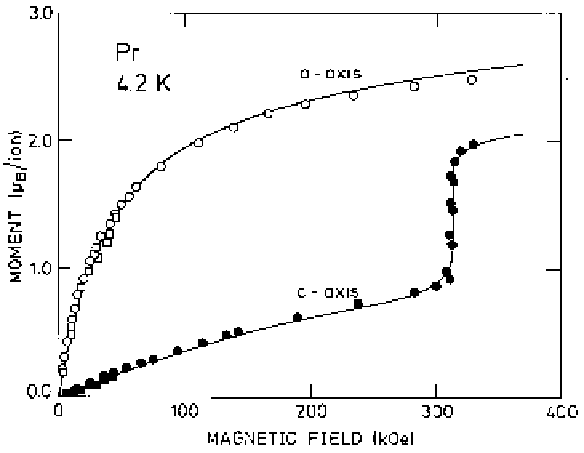Environmental Engineering Reference
In-Depth Information
Fig. 7.13.
MF calculation of the magnetization of Pr at 4.2 K as a
function of a magnetic field applied in the
a
-and
c
-directions. The circles
are the experimental measurements of McEwen
et al.
(1973), while the
squares are deduced from the neutron-diffraction results of Lebech and
Rainford (1971).
Fig. 7.11 is calculated with the assumption of a single-
Q
ordering of the
moments.
The final perturbation which may induce a magnetic state in Pr is
an external magnetic field. The modification of the crystal-field levels
of an isolated hexagonal ion by a magnetic field is illustrated in Fig.
7.12. If the field is in the basal plane, the excited states are increased
in energy, relative to the ground state, but they mix strongly into it,
giving rise to the large moment shown in Fig. 7.13. If the magnetic
field is along the
c
-axis, on the other hand, the matrix elements between
the ground and excited states on the hexagonal sites are zero, but the
|
+3
>
states both decrease in energy, linearly
and quadratically respectively. At about 320 kOe, the latter crosses
the ground state and the moment increases abruptly, as observed by
McEwen
et al.
(1973). As illustrated in Fig. 7.13, the model of Houmann
et al.
(1979), supplemented with a magnetoelastic coupling
B
α
2
=7
.
0
meV for the hexagonal ions, accounts well for these results. The jump in
the magnetization rapidly becomes smeared out when the temperature
is raised, due to the thermal population of the excited states, as observed
experimentally at 14 K (McEwen 1978).
+1
>
and
|
3
s
>
→|

Search WWH ::

Custom Search